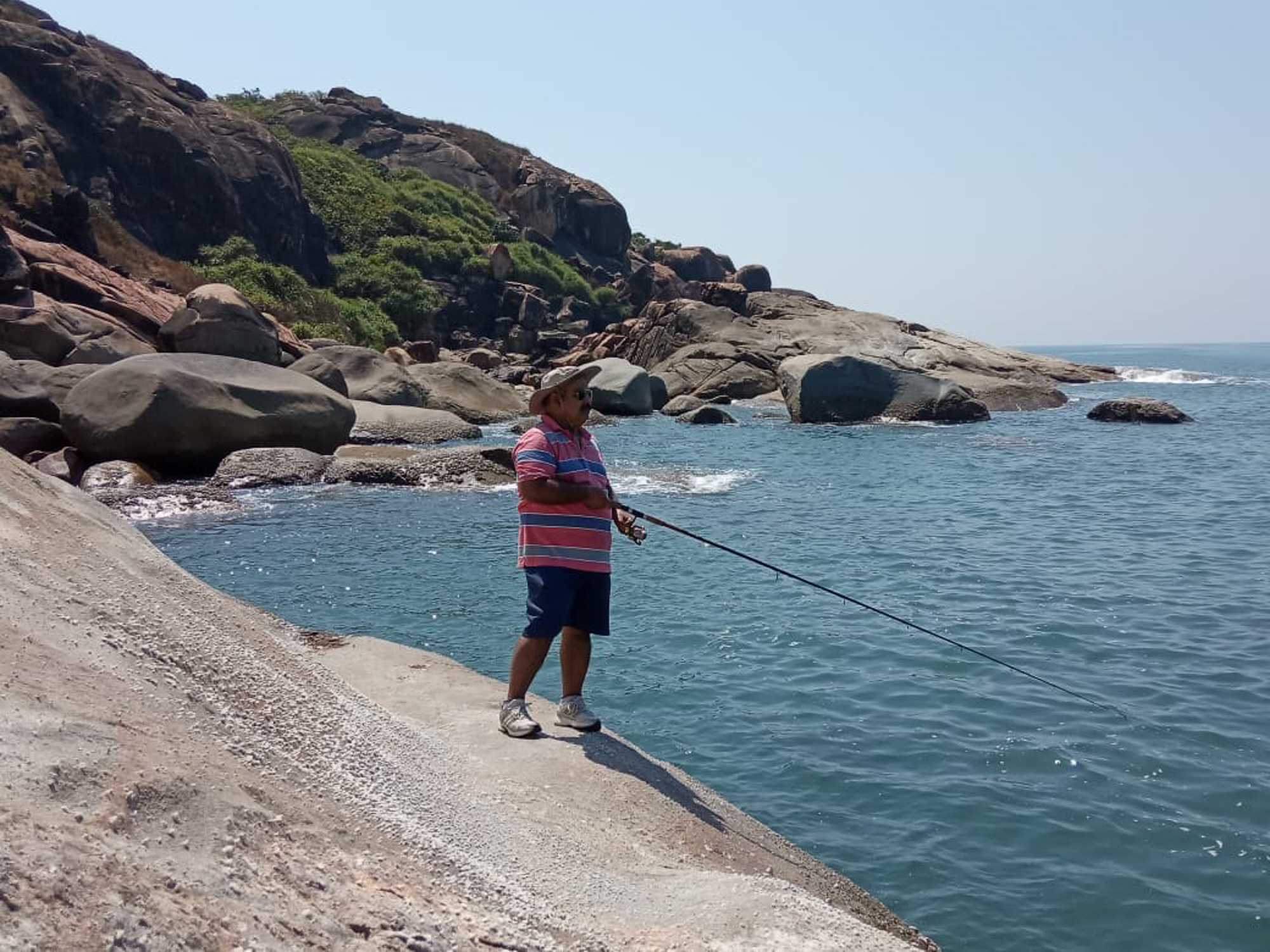As the human race came to being, they started their life as hunter gatherers and later embraced agriculture as their primary livelihood. Archaeological findings all around the globe have established that all civilisations started closer to the water sources like sea, river or lake. Therefore, like many other hunting activities fishing is one of the oldest activity known to man. Archaeologists have found ancient dumps of shell and bone, cave paintings depicting fishing and even hooks made from bone. There is even a theory that indicates we might be closer to the aquatic life forms and therefore have so many close tie with water bodies. Almost seventy percent of the earth is made up of water and there are much more number of species in water than on earth. All life forms on the planet started from water including the proven lineage of mammoths. The ‘Aquatic Ape Hypothesis’ states that much more than other primates, man has several features that are seen more often in aquatic than terrestrial mammals: nakedness, thick subcutaneous fat-layer, stretched hind limbs, voluntary respiration, dilute urine etc. As for this theory, our ancestors once spent a significant part of their life in water and with the Pleistocene cooling, they returned to land and became bipedal omnivores and scavengers and later hunters of coastal and riverside animals.
At Olduvai in eastern Africa, fragments of catfish appear with remains of Homo-habilis and the later Homo-erectus, who lived near a shallow lake more than 500,000 years ago. From that time and particularly since the earliest pictures on rock walls about 40,000 years ago, there is ample evidence that, in addition to serving as food, fish satisfied a wide range of human wants and needs, both physical and spiritual. The capture, preparation and consumption of food have so many social aspects that we cannot imagine a worthwhile human society that does not include such cultural enrichment. Some archaeologist suggests that fishing may be overlooked in studies of early human cultures because it did not require specific tools.
There is evidence that Tianyuan man (whose bones are old from between 42,000 and 39,000 years) used to regularly eat freshwater fish. Most of the people of that time lived a hunter-gatherer lifestyle and they moved a lot but had their permanent settlements in caves. The caves discovered were full of shell middens, discarded fish bones and cave paintings which show that they fished both salt and freshwater fish.
Southern France has caves and cave art that is over 16,000 years old and represents marine animals and spearfishing with barbed poles (harpoons). Early ways of the main fishing methods started appearing in the Neolithic times between 8,000 and 4,000 years ago. For instance, one of the earliest fishing hooks was gorge hook used by Native Americans in California coast between 7500 to 3000 years ago. Some other tribes used plant toxins to numb the fish and fish it out easily. Harappans people used one of the first bronze harpoons and similar metallic spears over iron due to corrosive resistance property of bronze.
The ancient river Nile was an angler’s paradise. The Egyptians relied on fresh and dried fish as a staple in their diets and the various methods they used have been well represented in many ancient representations from their lives. Although they had some tools like nets, baskets and even hooks and lines, the fish caught were often clubbed to death. Perch, catfish and eels were among the most important catches in the Egyptian times.
Ancient Greeks considered fisherman of very low status so they rarely depicted them in art. Despite of this, Museum of Fine Arts, Boston has a Greek wine cup from 500 BC that shows a boy that crouches on a rock and has a fishing-rod in his hand and a fish trap in water below him. Basically – all civilisations that lived near the water have developed some forms of fishing and relied on fish as a part of their diet to some extent.
Perhaps the most recognisable tool for fishing is the hook. No one knows for certain, but it is quite probable that prehistoric man was using some form of a hook over 40,000 years ago. Experts have had some problems pinning down exact dates since they know most of the materials used back then were most likely wood and not very durable. British Isle anglers catch fish with hooks made from the hawthorn bush, right up to the present day. Although Stone Age man had the tools necessary for making bone hooks, it is hard for scientists to get exact dates since bone does not define its age well. The oldest known hooks have turned up in Czechoslovakia, but others have turned up in Egypt and Palestine. The Palestinian hooks are believed to be over 9,000 years old, proving that fishing has been around for a very long time indeed. Native Americans or the Red Indians on Easter Island made their hooks from a gruesome material. Since human sacrifices were abundant in the area for some time, the natives made their fish hooks out of the most plentiful material around – human bone. Fish hooks made of human bone were the norm there until missionaries arrived from European countries at the turn of the last century. In addition to hooks made of stone, bone or wood, ancient man often combined material to make composite hooks with barbs that kept the bait on.
Angling is a method of fishing by an angle or hook. Modern day angling has gone leaps and bounds. Carbon fibre rods, aircraft quality aluminium reels, fluorocarbon lines, platinum coated hooks, portable fishing sonars, battery operated lures – there’s no end to the list. Angling with a rod can be broadly classified based on water type: fresh water, which includes all ponds, lakes, reservoirs, brooks, creeks, streams and rivers; and salt water, which covers oceans, bays, estuaries, tidal creeks and river mouths. There are many ways to classify angling depending on type of rod, lure being used, way of putting the bait in water etc. However, most commonly used classification of angling are as follows:-
Bank fishing. Casting from the shore or bank of a still body of water or a large river.
Stream fishing. Casting from the shore or while wading in the water of a stream, river or creek.
Boat fishing. Casting from a boat anchored in the water.
Drift fishing. Fishing from a boat that is being moved by wind, tide or current.
Trolling. Fishing from a boat motoring slowly through the water.
Surf fishing. Casting from a beach into salt water.
Jetty fishing. Casting from a man-made structure that extends into salt water from shore.
Inshore fishing. Fishing from a boat in a bay, tidal river, or on the ocean within a mile or two of land.
Offshore fishing. Fishing from a boat on the ocean that’s well off the coast.
Within these general types are three basic styles of fishing, which are determined by the species you are after and/or the tackle you pursue them with:
Bait fishing. Fishing with a live or dead organism on a hook, such as a worm or a minnow.
Lure fishing. Fishing with a wood, plastic, or metal device that imitates or simulates something that fish eat.
Fly fishing. Fishing with a fly rod using artificial flies, which resemble insects or other fish.
There may be innumerable types of fishing, but the primary objective of fishing is to catch fish. Whether you trick the fish to get hooked or get after them and hunt, you need to go outdoor to their habitat or near a water body. The excitement of fishing is not always restricted to hooking one but being out near them amidst in the creation of the nature. The actual enjoyment of fishing stems from many of its aspects. Just standing in front of a wave breaking sea, rowing across a glass-still lake at dawn, wading knee deep water in a stream or riding the ocean swells on a fishing boat provide enough enjoyment for many people. For others, getting away from it all (whatever it may be) is enough reason to grab a rod and find some water. Happy fishing.

